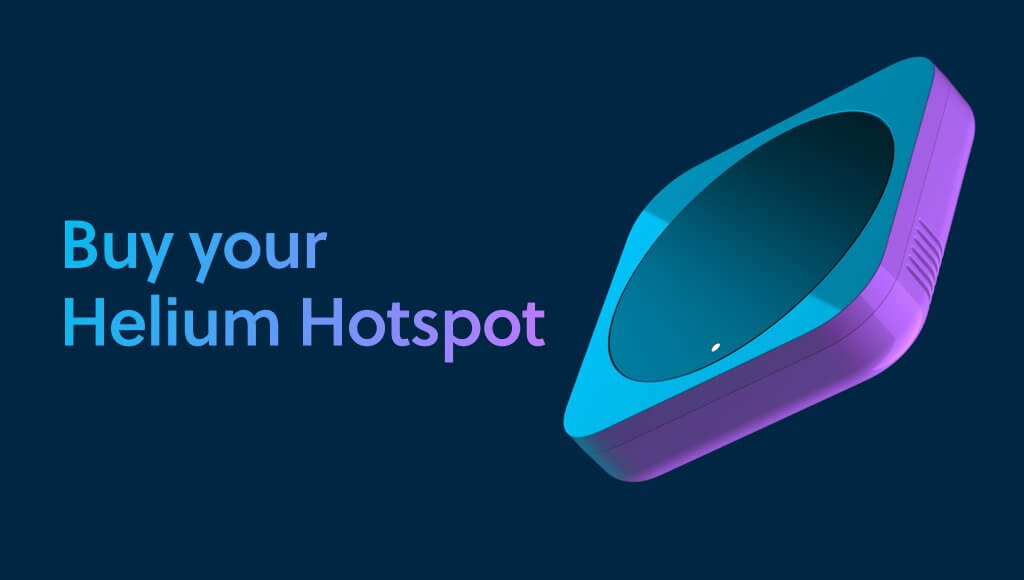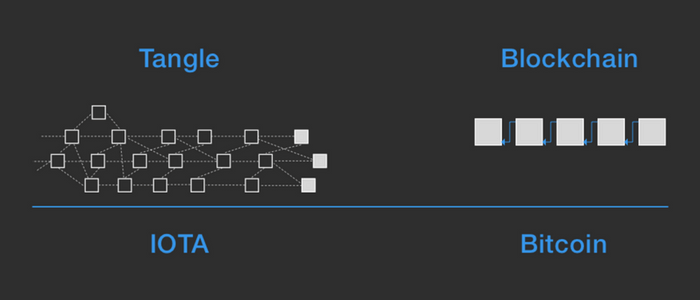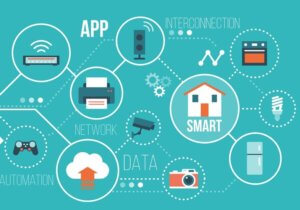The Internet of Things is already a billion-dollar industry, with billions of connected devices as of today. Also, IoT spending is on track to reach almost $1.4 trillion by 2021. While the IoT industry continues to grow, it needs a secure and readily available internet to flourish. However, the available solutions, i.e., cellular, WiFi, and Bluetooth, are either too expensive, too energy-intensive, or too limited in range.
The Helium network is a blockchain-powered wireless network that allows devices from anywhere in the globe to connect to the internet and establish their location without needing power-intensive satellite location hardware or costly network plans. Helium wants to utilize the blockchain to bring decentralization to an industry long dominated by powerful monopolies. The result is that an affordable wireless network becomes a commodity available to anyone.
Helium’s secure and open-source network also allows developers to build energy-saving, internet-connected devices in a fast and low-cost manner. With this, the project wants to ‘Start a Wireless Revolution.’
At the time of writing, the network had 10,426 total hotspots, with close to 8 billion credits spent, per its website.
Breaking Down Helium
Launched in 2013, Helium is a decentralized wireless network that seeks to offer a secure and cost-effective way for low-power devices to join the IoT industry. The Helium protocol runs on blockchain technology and uses the HoneyBadgerBFT consensus model.
Helium has the following core features:
- Helium hotspot – A tool that’s both a miner and users’ pathway to the Helium blockchain
- Proof of coverage – A novel mining mechanism that uses radio waves to verify the location of Hotspots
- LongFi – a technology that combines the wireless protocol LoRaWAN (Long Range Wide Area Network) with the Helium blockchain so compatible LoRaWAN devices can transfer data over the Helium network
Helium: Existing Products
#1. Helium Hotspot
The Helium Hotspot is a wireless router by Helium. Just like other LoRaWAN devices on Helium, the Hotspots support miles of wireless network for anyone to carry out mining and help maintain and support the network.
#2. Helium Console
This is an internet-based management tool through which developers can register, verify, and manage their devices in the network. The Helium Console is responsible for managing user-level permissions, registering devices IDs, onboarding new devices securely, and utilizing data credits.
#3. LongFi
This tool combines LoRaWAN with the Helium blockchain, so any LoRaWAN device can plug in and start transferring data on the network. LongFi supports the following:
- Easy device onboarding: Users can onboard as many devices as possible without them having to undergo endless configurations or verification by third parties
- Device roaming: Devices on the network have IDs that are stored on the blockchain, allowing them to transfer data to the network through any Hotspot
- Earning HNT tokens: Via LongFi, device owners can earn HNT tokens for transferring data over the network
- LoRaWAN Support: Any LoRaWAN device can transfer data through the network with little configuration required
#4. Helium Tabs
These are location trackers enabled by Helium. They can track all sorts of things: from pets to luggage, to keys, and pretty much anything that’s covered by the Helium network.
Helium: Technical Infrastructure
Here, we look at the infrastructural highlights of Helium.
#1. Proof of Coverage (PoC)
PoC is a variation of the Proof of Work consensus algorithm that utilizes radio waves to verify hotspots’ location on the Helium network. PoC constantly requires routers to prove their wireless coverage quality by decrypting and transferring LongFi data over the network. Helium Hotspots stand to earn HNT for submitting valid coverage proofs.
#2. The Helium Consensus Model
Helium’s consensus mechanism involves 16 participants – who form the Consensus Group (CG) – elected once every epoch. Any active Helium Hotspot on the network is eligible for election to become part of the CG, although they’re more likely to be chosen if they pass the PoC challenge.
For every election, 4 new CGs are added to 12 members from the previous election. A Hotspot can participate in no more than 4 consecutive CGs. If a CG member performs poorly, they’re likely to be removed before the 4 epoch limit. Mining rewards are distributed among participating members at the end of every epoch.
Participants in the Helium Network
The participants of Helium can be thought of as these below:
#1. WHIP
This is an open wireless protocol that is long-range, low-power, and most fitting for use with commodity open-standards hardware. Hardware that’s compatible with WHIP can communicate over many square miles, whether in dense urban settings or rural areas. Such hardware can also last for many years using standard batteries. WHIP utilizes public-key cryptography for security, with verification taking place on the Helium blockchain.
#2. Hotspots
These are physical network devices that transfer data back and forth between routers and various devices. Hotspots also generate proof of coverage, and they can also geolocate devices through the Helium network without any additional apparatus.
#3 Devices
Devices are hardware products embedded with a WHIP-compatible radio transceiver and can interact with Hotspots on the network. Devices are powered by the typical battery and can last for several years with them. Devices can exist in many forms depending on their use case, and the performance and battery life can be optimized through a variety of transmission strategies.
Helium: Community Growth Strategies
The Helium team is currently undertaking several strategies to advance the growth of the project. These strategies are as follows:
- Rewarding network participants who deployed more than 15 Hotspots
- Educating IoT developers on how to use the Helium platform
- Hosting Helium Hacks, a weekly video chat session by the Helium team
- Carrying out local and online meetups
- Engaging with the community via social media channels
Future strategies include:
- Releasing blockchain and IoT-related content via podcasts, videos, blogs, and interviews with industry experts
- Providing the community with sponsorships to empower them to build apps on the Helium network
Who’s on the Helium Team?
Helium is the brainchild of Amir Haleem, Shawn Fanning, and Sean Carrey. The trio began working on the idea in 2013.
Haleem has a strong background in game development. Fanning is known for creating the popular music sharing platform Napster, one of the first of such platforms to employ a peer-to-peer approach. Carry has several years of development experience, including Where, an advertising platform since acquired by PayPal.
The product team comprises members with combined experience in “radio and hardware, manufacturing, distributed systems, peer-to-peer and blockchain technologies.”
Future of Helium
The Helium team considers where they are to be just the beginning. They view decentralized wireless networks as a still novel concept that needs more research so it can meet the demands of the modern-day internet. Given this, the team has or intends to undertake the following initiatives:
- Identify whether it’s possible to apply blockchain and the decentralized wireless service idea to WiFi Bluetooth and cellular networks
- Add the possibility for more proofs of coverage to strengthen the Helium network as it grows
- Formally illustrate the algorithm behind Proof of Coverage
- Investigate the possibility of deploying smart contracts beyond their current limitations
The Helium Token
HNT is the native cryptocurrency of the Helium network. The token has several uses, including the two most important ones:
- Mining rewards: Hotspots earn HNT for contributing to the running and security of the network by transferring data
- Payment: HNT is used by users to generate data credits with which to pay for network services
HNT: Tokenomics
On October 20, 2020, HNT traded at $1.12, with a market cap of $57,123,035 and a market rank of #131. HNT’s 24-hour volume was $1,848,021, and it had a circulating and total supply of 51,005,233 and a total supply of 55,960,199. And finally, the token had an all-time high of $4.03 (Sep 24, 2020) and an all-time low of $0.0253391 (June 10, 2020).
Where to Buy HNT
HNT is listed as a market pair with USDC, USDT, PERP, and USD in exchanges like Bilaxy, Binance, Binance.US, Hoo, FTX, and Serum DEX.




 IoT stands for the Internet of things. It is a system of interrelated computing devices, mechanical and digital devices. These devices are provided with unique identifiers that can transfer data in the network without human-to-human or human-to-machine interaction. This is possible as the devices are extended with internet connectivity and sensors so that the transfer of data is possible.
IoT stands for the Internet of things. It is a system of interrelated computing devices, mechanical and digital devices. These devices are provided with unique identifiers that can transfer data in the network without human-to-human or human-to-machine interaction. This is possible as the devices are extended with internet connectivity and sensors so that the transfer of data is possible. The concept of IoT enables smart homes. Most of the devices we use at home can be embedded with sensors, and with the help of IoT, we can control them remotely using our smartphones. When at home, they can easily be controlled using Alexa, Google Home, with the help of voice recognition. To enable all these functionalities, sensitive data such as voice and facial recognition should be stored. This data can be stored securely in the blockchain, which allows strict access restrictions. It can be accessed by anyone else if required only through individual permissions using smart contracts.
The concept of IoT enables smart homes. Most of the devices we use at home can be embedded with sensors, and with the help of IoT, we can control them remotely using our smartphones. When at home, they can easily be controlled using Alexa, Google Home, with the help of voice recognition. To enable all these functionalities, sensitive data such as voice and facial recognition should be stored. This data can be stored securely in the blockchain, which allows strict access restrictions. It can be accessed by anyone else if required only through individual permissions using smart contracts. IoT plays a very crucial role in health care these days. Remote health care can be achieved using IoT. Elderly care is essential to most of the countries these days as the elderly population is increasing in countries like China, Japan, and the US. Since there are fewer people to take care of the elderly, IoT can come to our rescue.
IoT plays a very crucial role in health care these days. Remote health care can be achieved using IoT. Elderly care is essential to most of the countries these days as the elderly population is increasing in countries like China, Japan, and the US. Since there are fewer people to take care of the elderly, IoT can come to our rescue. Agriculture can be widely improved by deploying IIOT (Industrial IOT) sensors and satellite imagery to monitor the millions of acres of land. With IoT used in the supply chain, provenance tracking can be enabled. Crops can be sold by using smart contracts even before harvesting them as all this data ensures the buyer of the quality of the product from the fields to their floor. This makes a profitable trade for all the parties involved.
Agriculture can be widely improved by deploying IIOT (Industrial IOT) sensors and satellite imagery to monitor the millions of acres of land. With IoT used in the supply chain, provenance tracking can be enabled. Crops can be sold by using smart contracts even before harvesting them as all this data ensures the buyer of the quality of the product from the fields to their floor. This makes a profitable trade for all the parties involved.